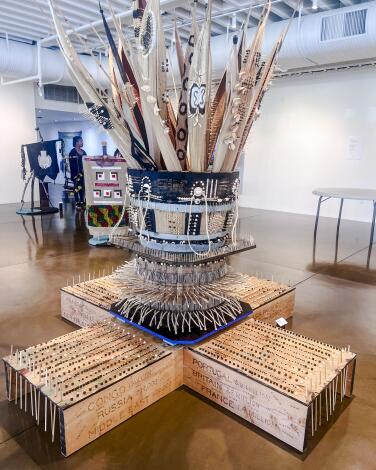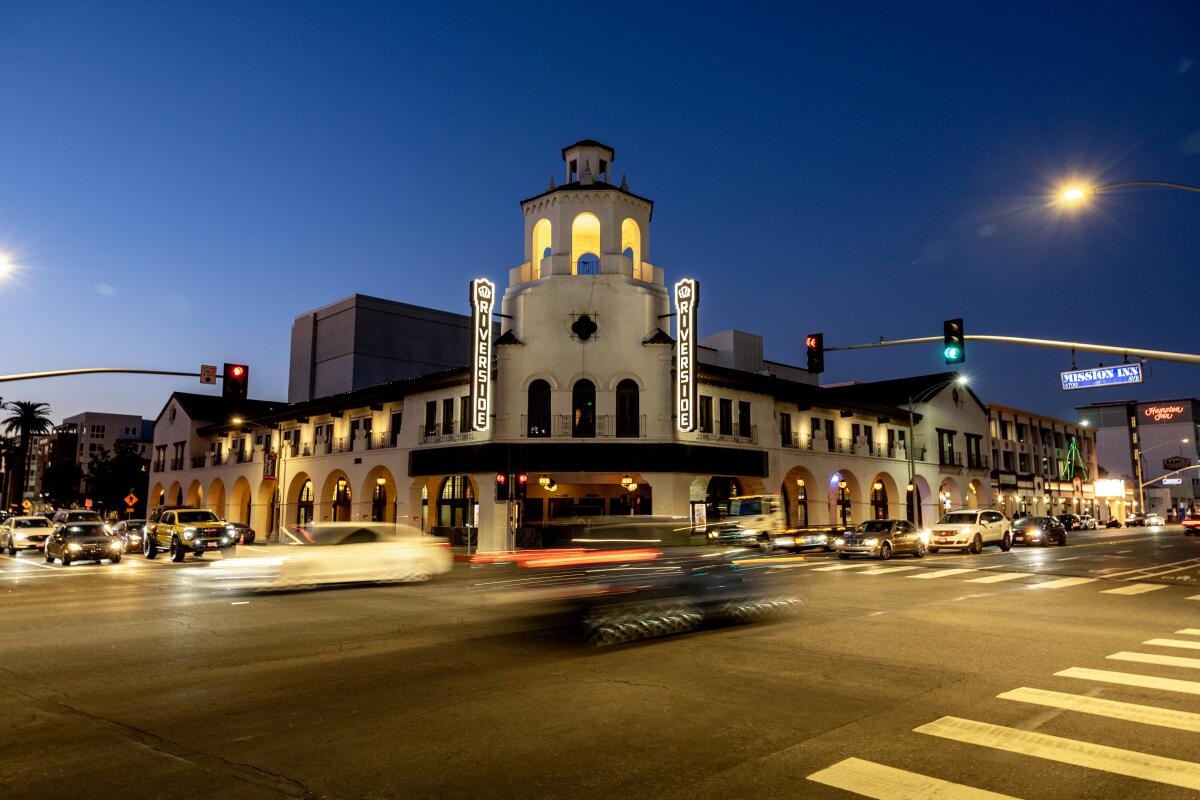
SoCal’s most overlooked weekend escape is a place you’ve probably driven past
- Share via
Standing at the corner of Mission Inn Avenue and Market Street in downtown Riverside on a sunny afternoon, the realization was so abrupt that I couldn’t help asking the question out loud: “Wait ... is my hometown low-key charming?”
Growing up, I’d always resented Riverside — often for qualities that might appeal to prospective residents. The community is tight-knit. My maternal grandparents and many of their siblings moved there from Mississippi in the 1950s and ’60s, which means that to this day I can hardly go anywhere without running into a relative or someone I went to high school with. (Once, I forgot my wallet in the Galleria at Tyler mall and by the time I got home, it was found by one of my grandmother’s friends who recognized my school picture tucked inside it.) Riverside is also quiet — I’ve commiserated more than once with UCR alumni about the city’s perceived lack of after-dark options. One of my main gripes there was, as I’d often bemoan to my mother, there’s nothing to do.
Still, it’s hard not to look back at those memories through rose-colored glasses and appreciate how, even when I wasn’t paying attention, Riverside always had my back. In grade school, I’d run through my neighbors’ yards with as much abandon as my own, tumbling through sprinklers and swaying on the tire swings they’d hung years ago for their children, who’d since grown. I think back to dusky evenings when we’d walk our dog through orange groves. Somehow, the picture doesn’t feel so distant from the way East Coast friends describe their own idyllic woodsy childhoods.
Planning your weekend?
Stay up to date on the best things to do, see and eat in L.A.
Founded by New York abolitionist John W. North in the early 1870s, Riverside was progressive from the start. In 1873, it birthed the California citrus industry when it became home to the first navel orange tree planted in the United States. Designated a California Historic Landmark in 1932, the tree still stands today.
By the turn of the 20th century, Riverside had emerged as a luxury winter destination, thanks in large part to the historic Mission Inn Hotel & Spa, the largest Mission Revival-style building in the country. Son of the hotel’s original owner and chief developer Frank Miller spent decades traveling the world collecting treasures to display around the property, including more than 800 bells, a symbol that has come to represent the city.
In its heyday, the hotel was a popular stop for politicians and celebrities, including President Ronald Reagan, who honeymooned there, and actor Bette Davis, who married her third husband, William Grant Sherry, at the inn. Now in its 31st year, the hotel’s annual festival of lights attracts hundreds of thousands of visitors each holiday season.
Today, to my surprise, Riverside — the largest city in the Inland Empire, with over 320,000 residents — proves more alluring than ever. The revived downtown area hums with new nightlife and dining destinations, and monthly art walks demonstrate a thriving scene. Restaurant options are as plentiful and exciting as in Los Angeles or San Diego — often with a reduced price tag. I try to visit at least one weekend each month and every time, I know that at least one dinner will be dedicated to Tony’s, a fast-casual Mexican spot housed in a Chicago Avenue strip mall, and that I’ll be stopping by Baker’s Drive-Thru on my way in or out of the city for a bean and cheese burrito and “frynormous” bag of fries. During the winter, the downtown farmers market is a gold mine for stocking up on rare citrus varieties.
Time and time again, the city has proved its worthiness as an intentional pit stop, flaunting landmarks such as a Chicano-centered art collection from comedian Cheech Marin, a long-standing LGBTQ+ bar and a state park brimming with citrus trees. This hometown of mine is charming — and it’s heartening to see more people discovering its delights.
Looking to explore Riverside? Here’s everything you need to eat, drink, see and do during an extended stay.
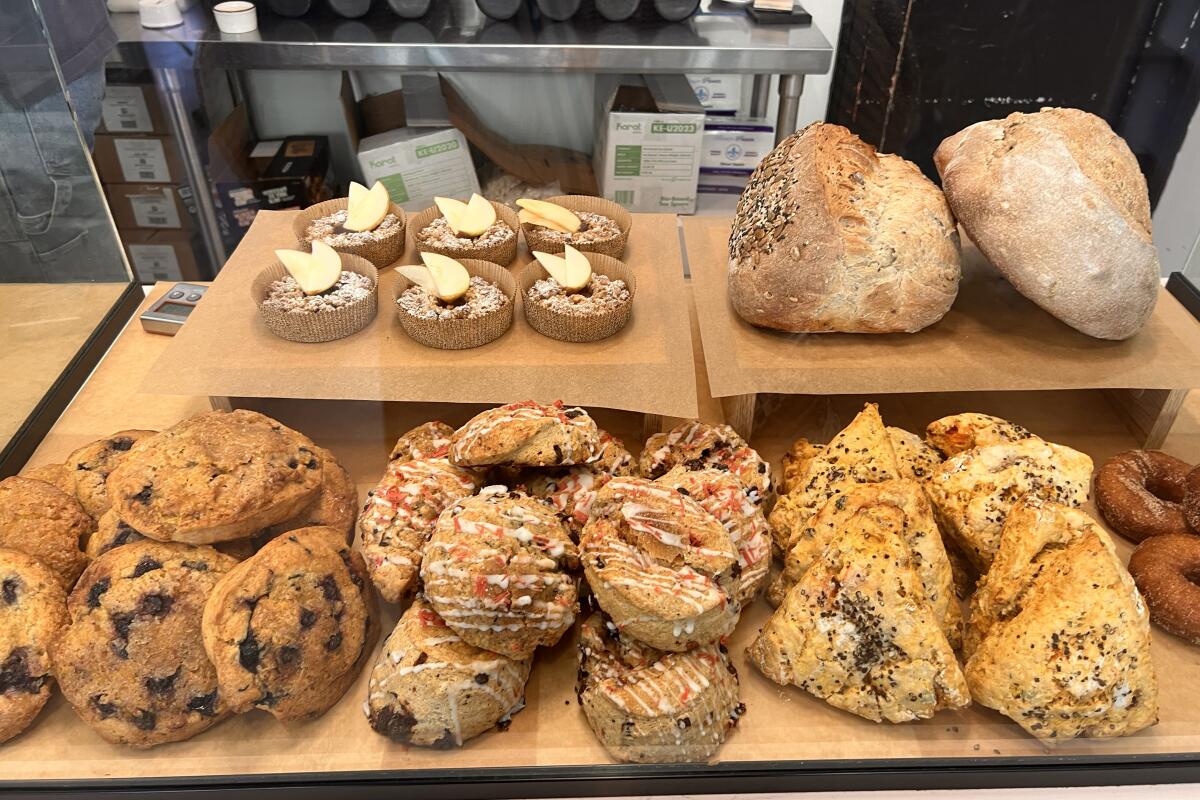
Rise early for coffee and fresh pastries from Arcade Coffee Roasters
The usual coffee drinks are offered, all featuring in-house roasted beans with optional house-made syrup combinations like agave cardamom and honey cinnamon, plus seasonal flavors like gingerbread caramel, vanilla pine and house hot chocolate. In the pastry case sit flaky, tightly wrapped croissants, muffins with crumbly crowns and palm-sized scones studded with jammy fresh fruit that are dropped off fresh every morning from the bakery. Earn a $1 early-bird discount by pairing a pastry with your coffee order before 9 am. With picnic tables spread across the patio, an open-format interior and just a short distance from both John W. North High School (hi, alma mater!) and UCR, it’s a popular study spot. You can take home single-origin beans that are roasted on-site as well as single-serving instant coffee.
The Chicago roasting location is hosting a holiday market on Nov. 25 from 7 a.m. to 2 p.m., with live music and screen printing, vintage sellers, ceramics, art, pet adoptions and natural wine in addition to the regular menu.
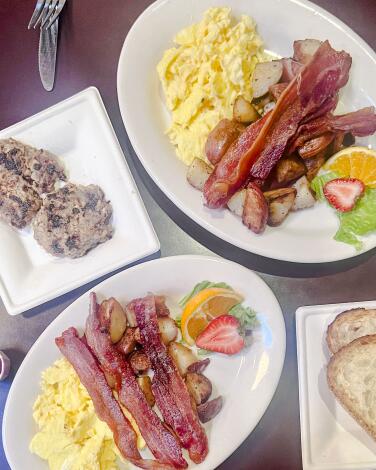
Grab a fresh loaf of sourdough at Simple Simon's Bakery & Cafe
Tucked off a pedestrian block, this bistro is, as the name alludes, simple and homey, with exposed brick walls and polished wooden booths that match the counter. It gets busy with downtown workers and families who snatch up fresh-baked croissants and bagels for breakfast and salads, soups and sandwiches on house sourdough for lunch. Peer into the pastry case where pecan sticky buns, lemon cheesecake squares and chocolate chip cookies all vie for attention. Simple Simon’s is the kind of place where baristas will eventually memorize your order and, when you ask for additional fried potatoes in place of bread, the chef will jovially call over his shoulder, “No problem!”
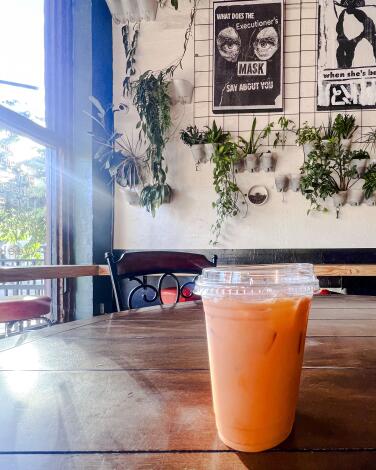
Join a chess tournament at Back to the Grind
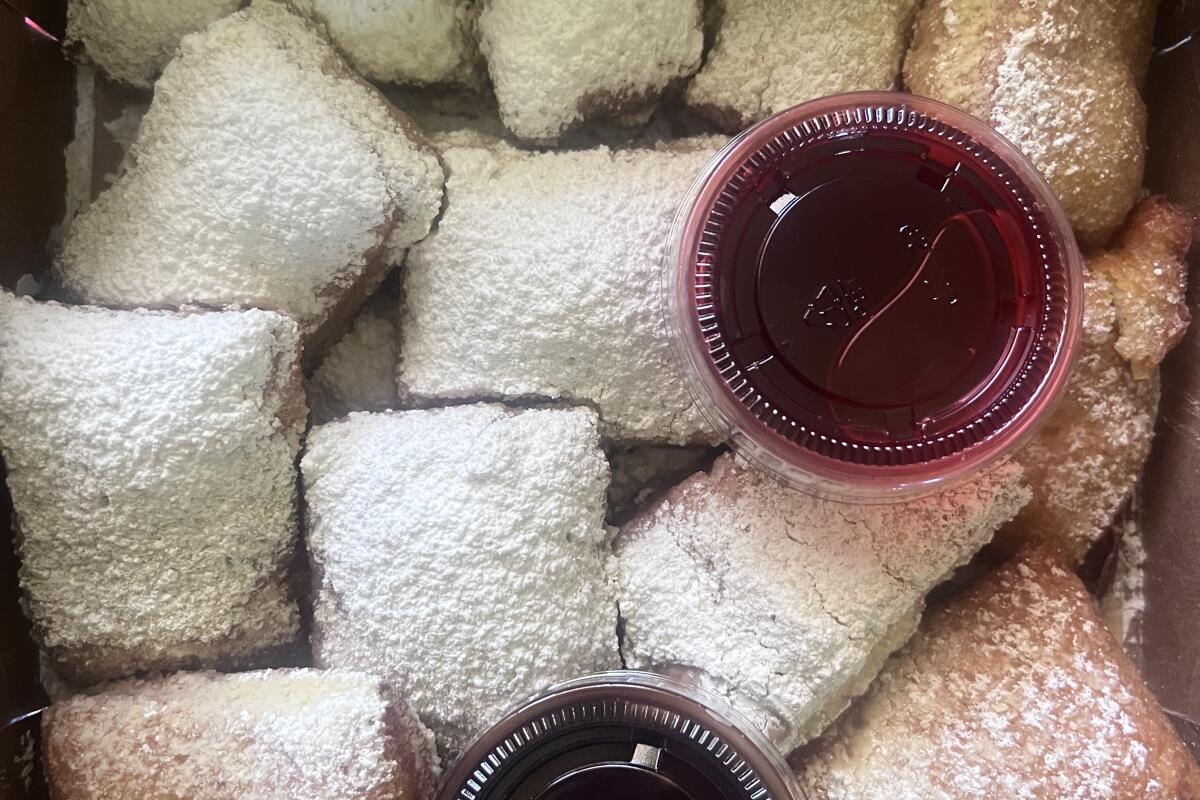
Start your day with a New Orleans-influenced breakfast at the Beignet Spot
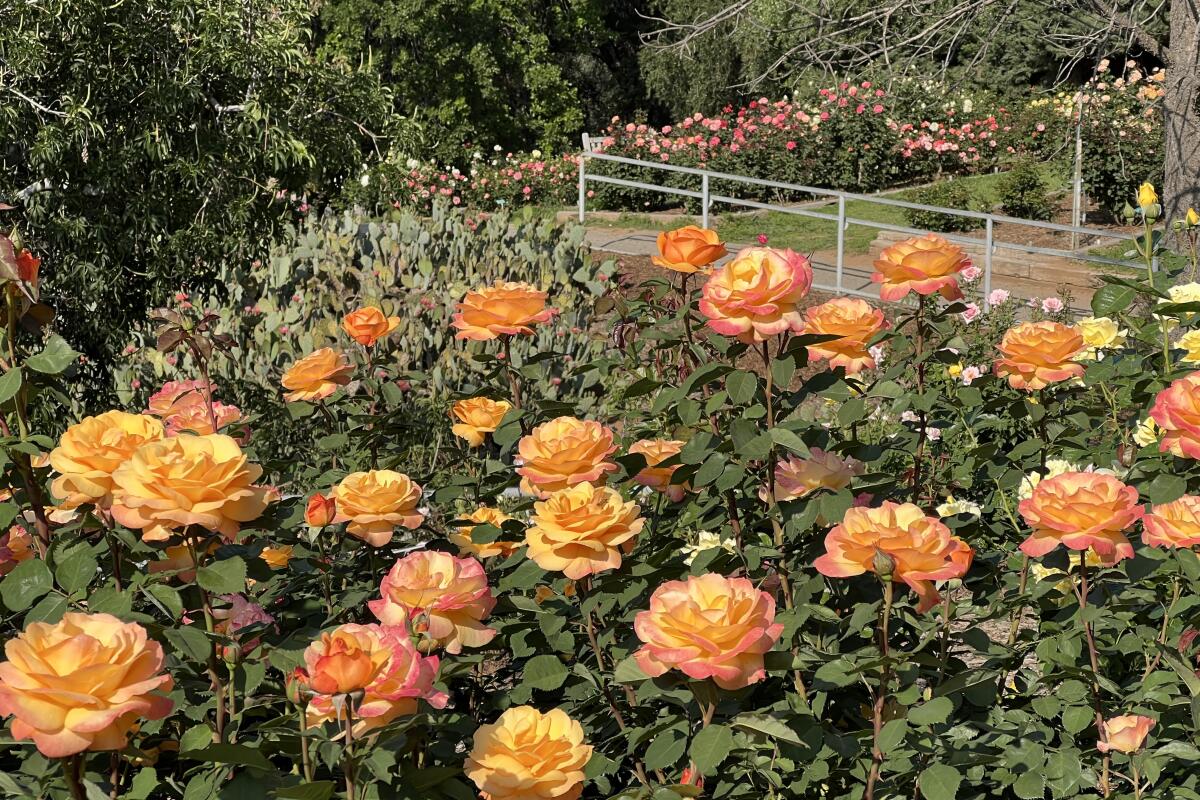
Watch butterflies break out of their cocoons at UCR Botanic Gardens
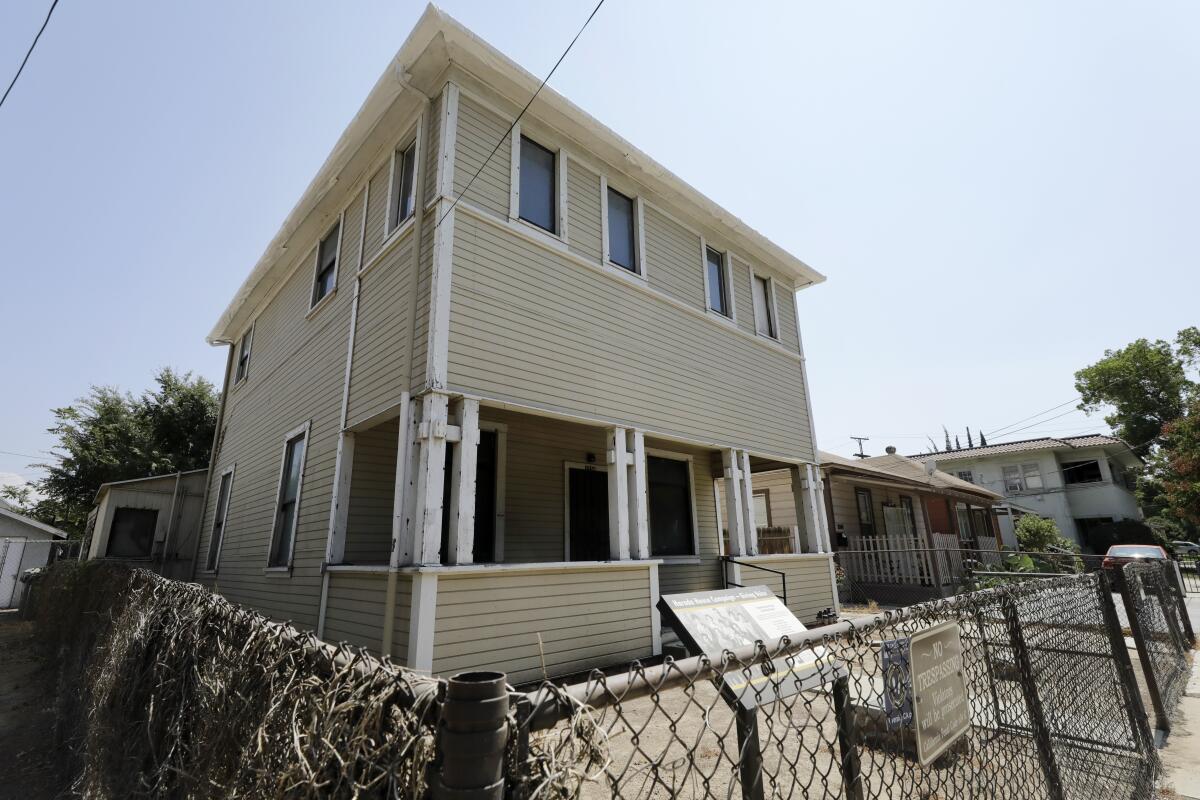
Honor Riverside history at the Harada House
The State of California vs. Jukichi Harada case began a year later in December 1916 and after almost two years of hearings, a judge granted the children the right to maintain ownership of the home, although the case also upheld the discriminatory legislation that prevented foreign-born immigrants from land ownership, which was amended in 1920 to close loopholes. Sadly, during World War II, the Harada family was forcibly detained and separated; both Jukichi and Ken died in a Utah incarceration camp.
In the late 1970s, Sumi submitted family records to the city and, with the help of UCR graduate student Mark Rawitsch, the home was declared a National Historic Landmark in 1991. Donated to the Museum of Riverside in 2004, the home has been under active restoration since 2016, with plans to eventually open it as a cultural and educational site. For now, you can take in the exterior of the two-level home on Lemon Street. A plaque offering a brief description of its history sits in front.
Earlier this year, nearby Highland Elementary School was renamed Harada Elementary to recognize the family and their significance to the city. This was also the final year of my mother’s tenure as the principal of that primary school, where she also was a teacher for many years. It’s because of her that I learned this little-known history.
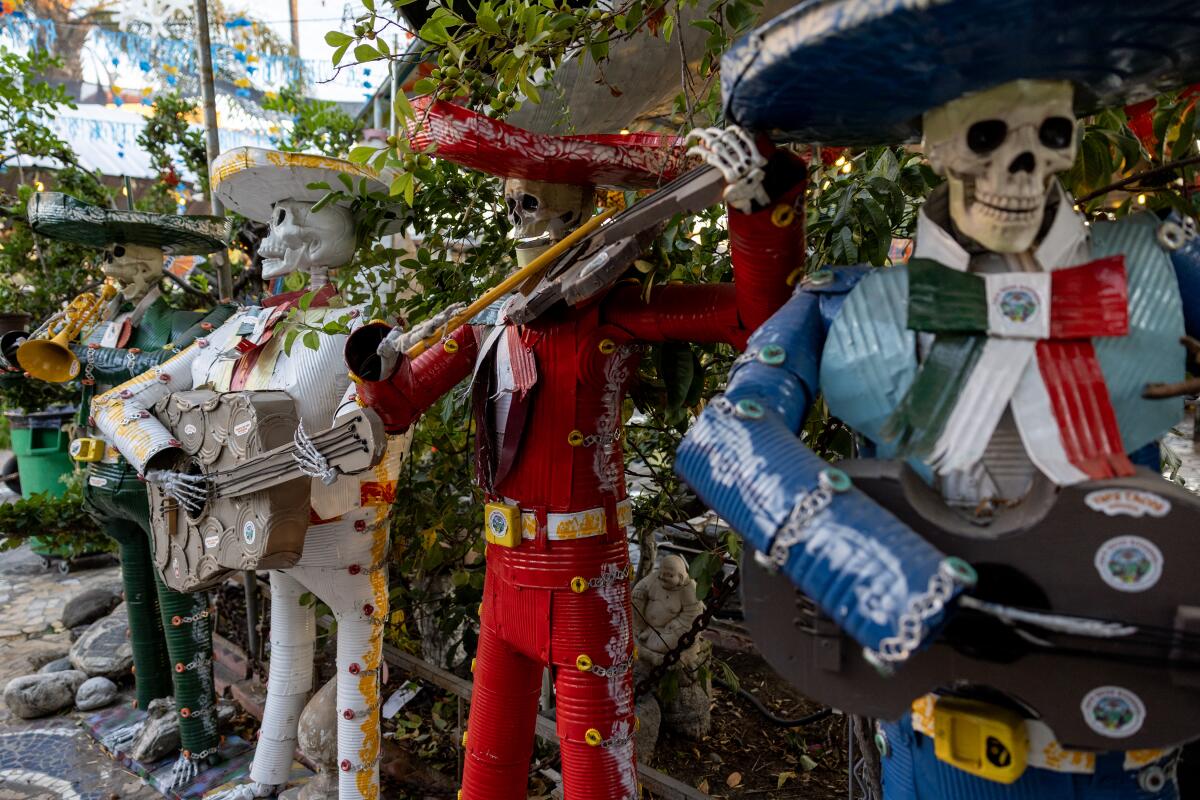
Marvel at the recycled art oasis that is Tio's Tacos
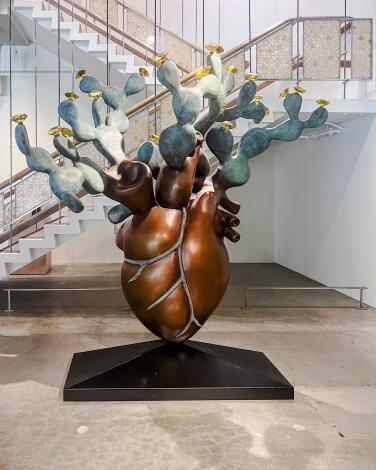
Take in Chicano art and culture at the Cheech Marin Center
Set aside a couple of hours to thoroughly explore the two-story space with ongoing exhibitions such as “Indigenous Futurism,” featuring works by 18 femme artists, all conceived through an Indigenous lens, and “Xican-a.o.x Body,” which examines pieces from the 1960s through the present day that position the brown body as a site of exploration and expansion. The museum extends its hours to 9 p.m. on the first Thursday of every month for Riverside Artswalk and is free during the art walk as well as on the first Sunday of every month. Tickets also grant you entry into RAM, which is just a couple of doors down.
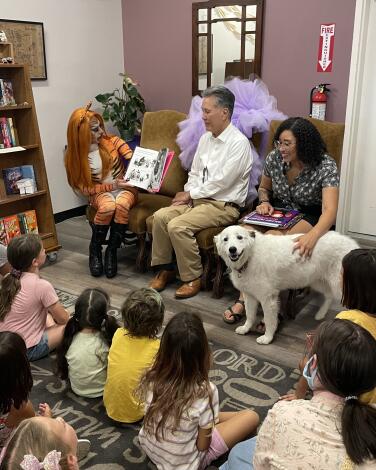
Join the 'So Emotional' Book Club or many other groups at Cellar Door Books
The store has since settled into its new home and has released a packed slate of programming, including book clubs focused on history, Black and LGBTQ+ literature, self-care, mystery, philosophy, sci-fi and fantasy, and kids, plus author signings, open mics and other events. The book selection is varied and extensive and booksellers are always happy to offer a recommendation when asked. Nya, an Australian shepherd mix and the bookstore’s unofficial mascot, will often sidle up for a pat on the head.
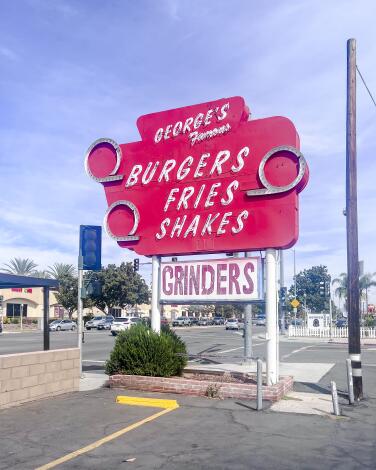
Pull into George's Drive In for burgers and a milkshake
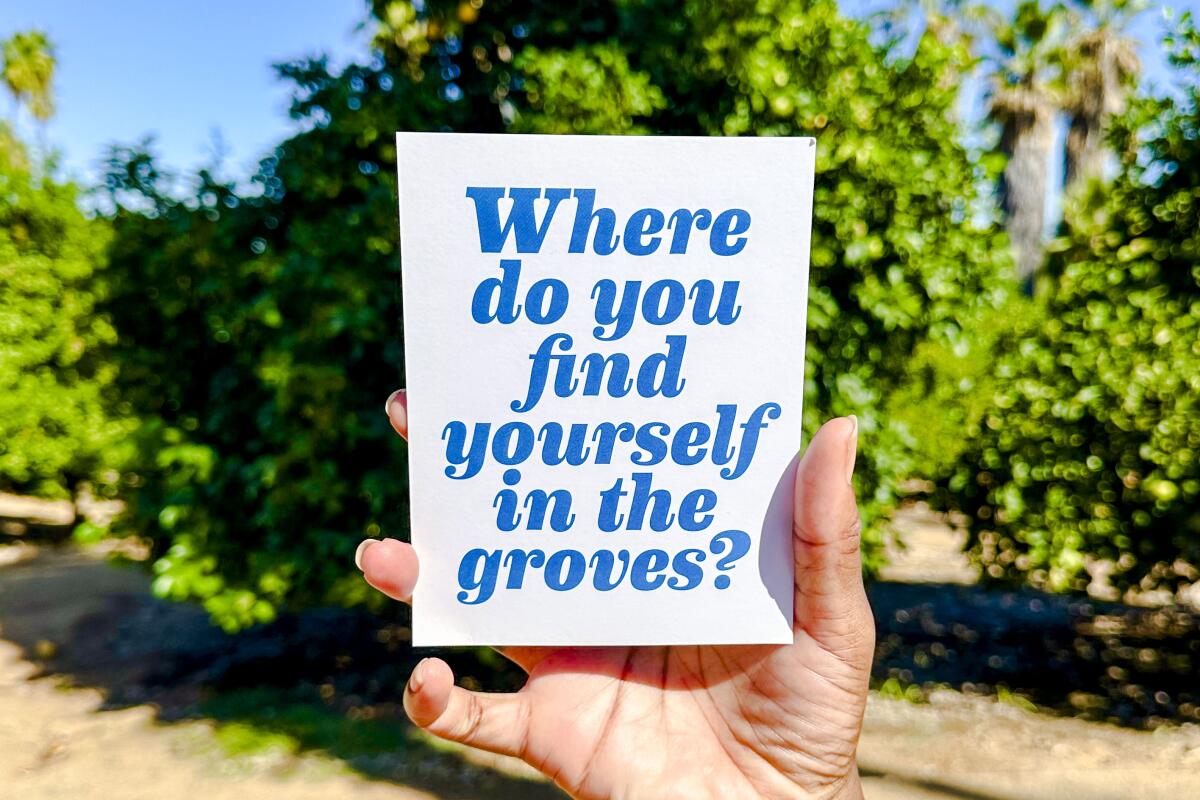
Explore the groves at California Citrus Historic State Park
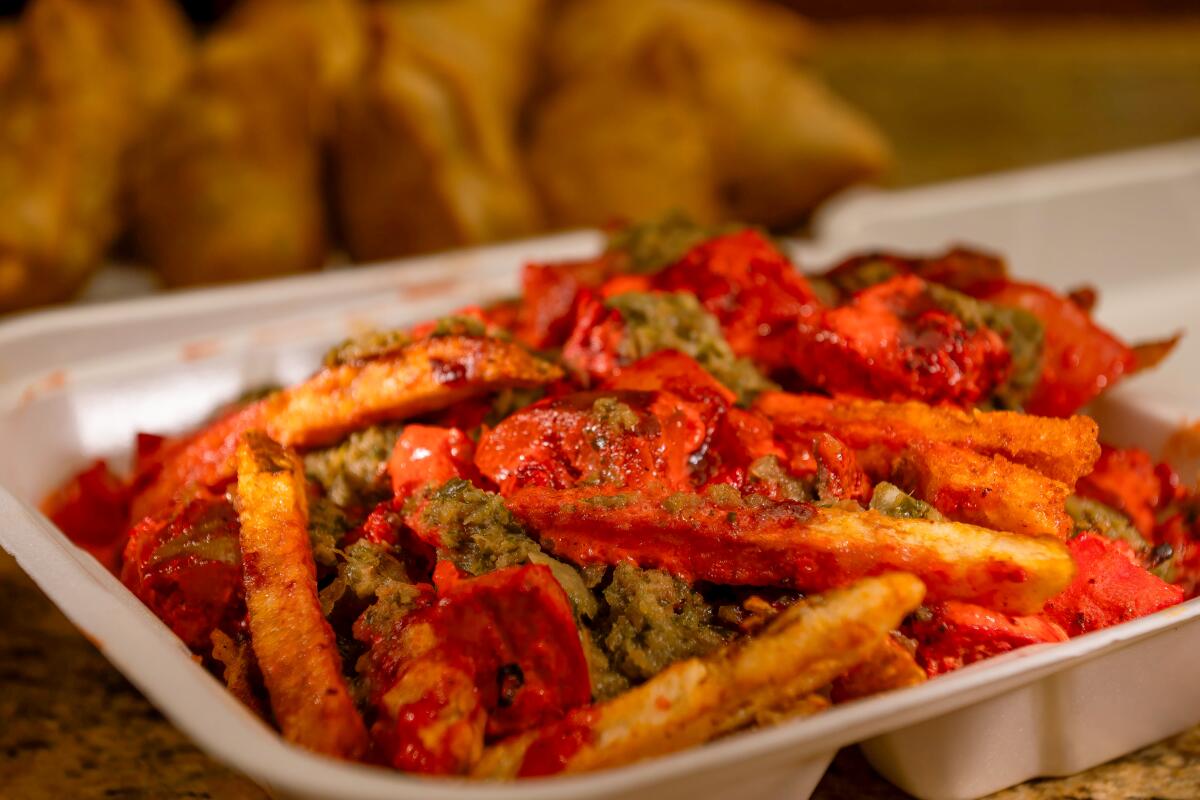
Order West Coast takes on classic Indian dishes at Cali Tardka
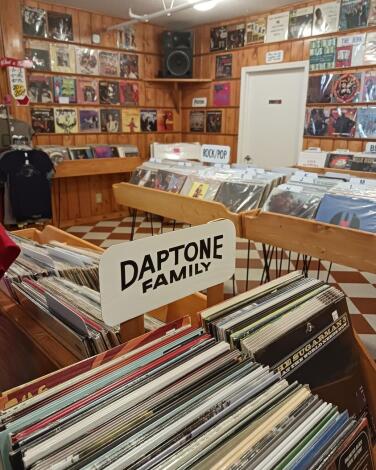
Stock up on vinyl at Penrose Record Room
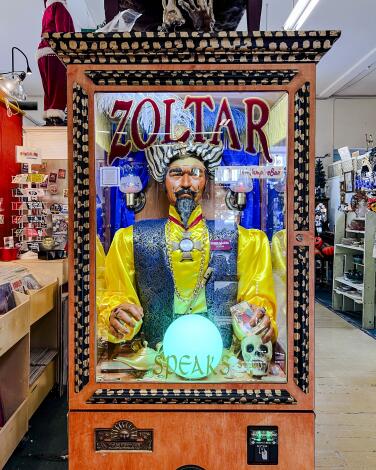
Hunt for vintage treasures at the Mission Galleria Antique Shoppe
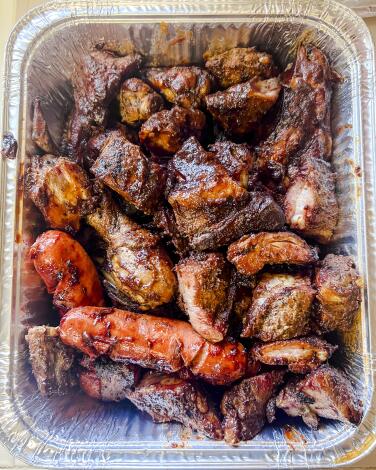
Fill up on smoked meats and Southern sides at Gram's BBQ
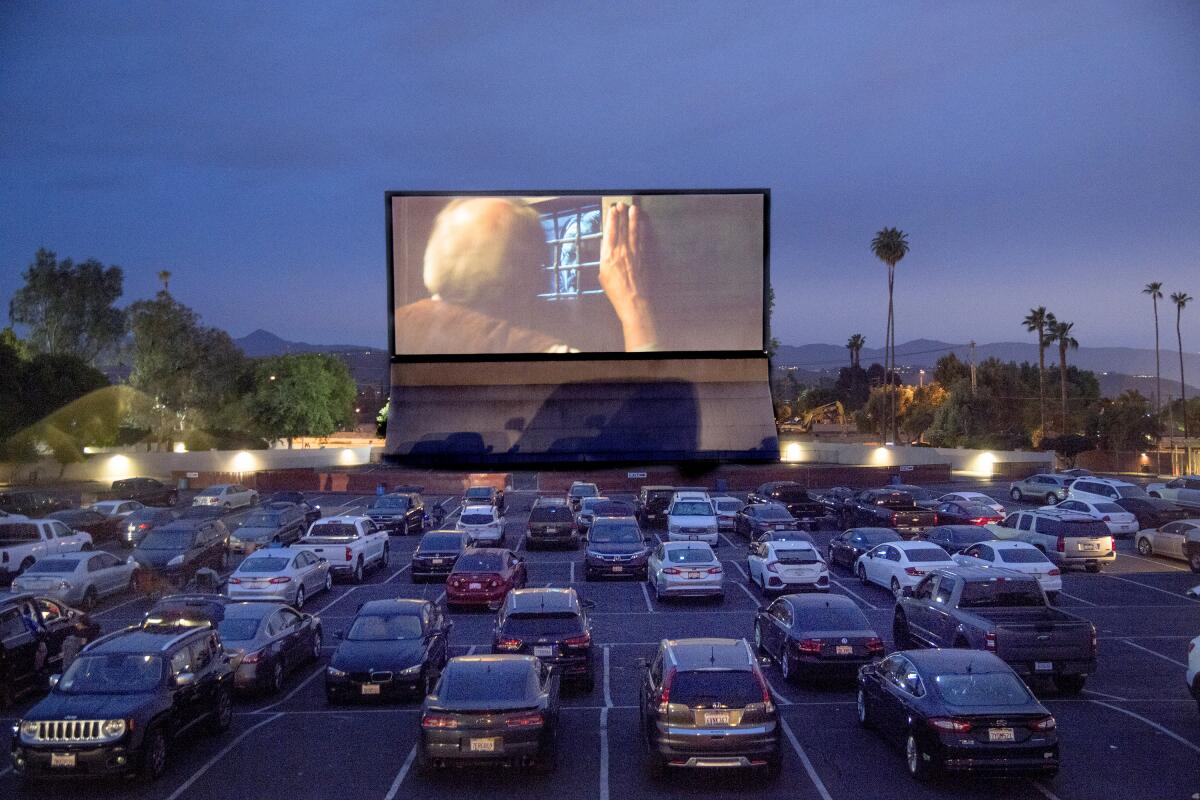
Kick it old-school at the Van Buren Drive-In Theatre and Swap Meet
Visit during the day on weekends or Tuesday, Wednesday or Thursday for a swap meet with vendors slinging everything from clothes and leather cowboy boots to household appliances, plants and more, including a pop-up mechanic.

See a Broadway musical at Fox Performing Arts Center
In 2006, the theater was purchased by the city of Riverside and underwent a major renovation as part of the $1.68-billion “Riverside Renaissance” program. Operated by Live Nation for the last decade, the arts center hosts Broadway musicals, comedy shows and, for the holidays this year, a performance of “The Nutcracker” by Inland Pacific Ballet.
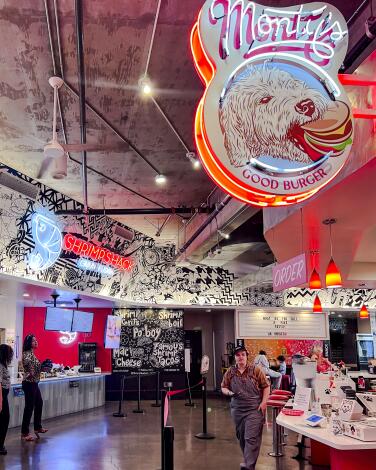
Hit all 14 food and drink stalls at Riverside Food Lab
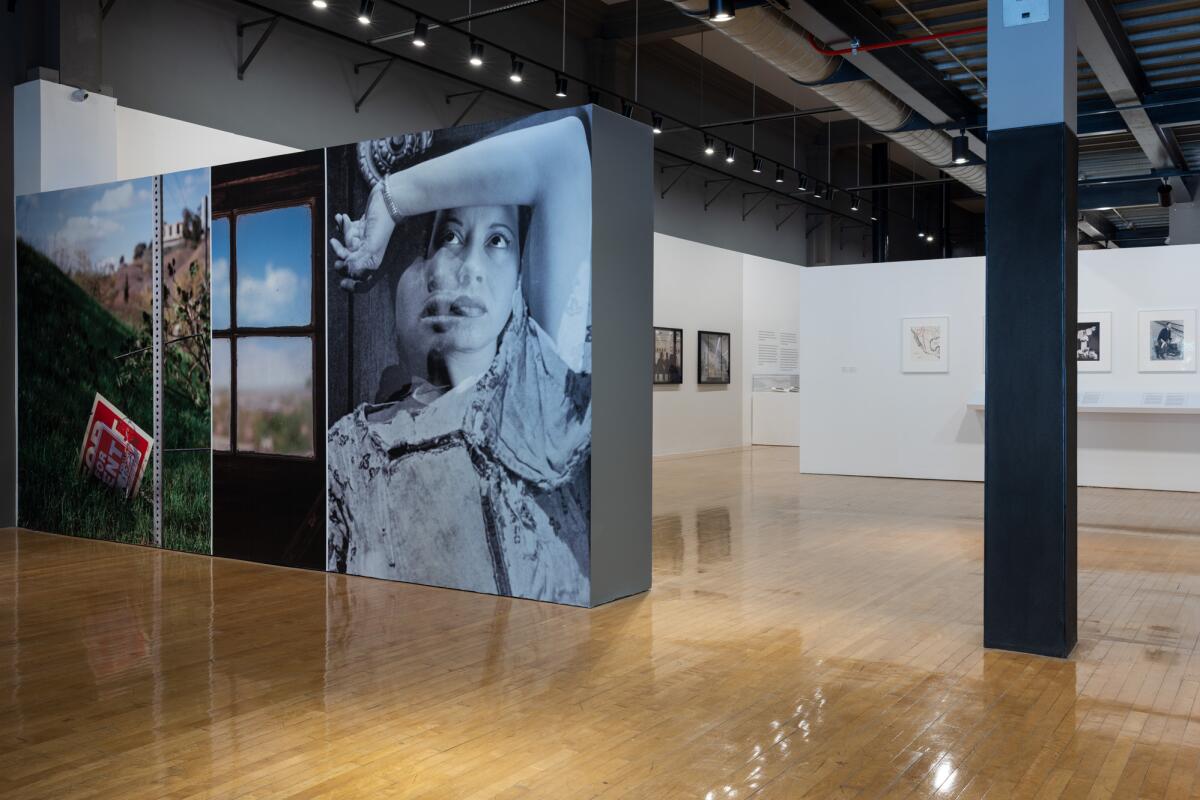
Take a mental snapshot at the California Museum of Photography
At the photography museum, an exhibition celebrating artist David C. Driskell, who helmed the cutting-edge exhibition “Two Centuries of African American Art: 1750-1950,” is on view through mid-December; “Heresies: Still Ain’t Satisfied,” which chronicles the legendary feminist journal, runs through late January and “The Impact of Images: Mamie Till’s Courage From Tragedy” is on display through March. Independent, experimental and foreign films are shown regularly as part of the Culver Screening Series. The photography museum is free with registration and film tickets are $10, or $8 for weekend matinees.
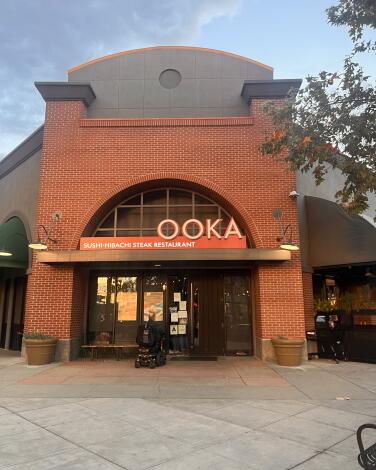
Go all out with a dramatic hibachi dinner at Ooka
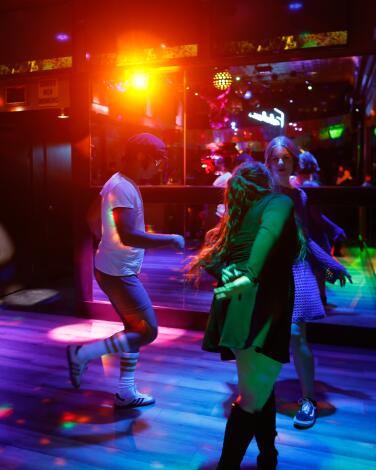
Leave it all on the dance floor at the Menagerie
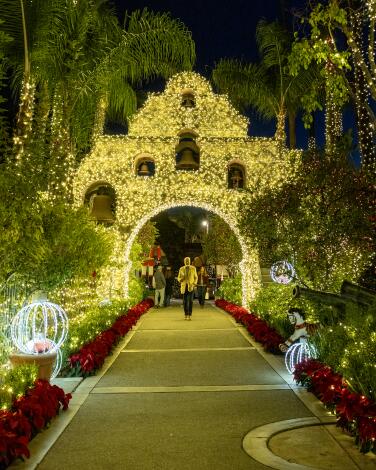
Admire the festival of lights at Mission Inn Hotel & Spa
After changing hands several times after Miller’s death, the Mission Inn was rescued from the verge of demolition by Duane and Kelly Roberts, who invested in a $55-million renovation and reopened the hotel with a Tuscan-inspired spa in 1992. It’s worth taking a tour so you can sneak a peak at hidden spaces that are typically only accessible to those who work there or book the hotel for a wedding or event. Landmark walking tours are conducted by the Mission Inn Foundation throughout the day, seven days a week.
During the winter season, the Mission Inn is illuminated with the Festival of Lights, a tradition that began 31 years ago and today serves as one of the largest public light displays in the country. The event is so popular that the inn opted to run it for an extra week this year, scheduling a switch-on ceremony with Cheech Marin for Nov. 18. Festival of Lights runs through Jan. 7.
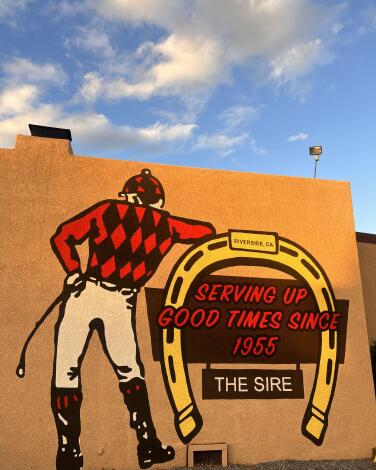
Order a steak and a beer at the Sire Bar & Grill
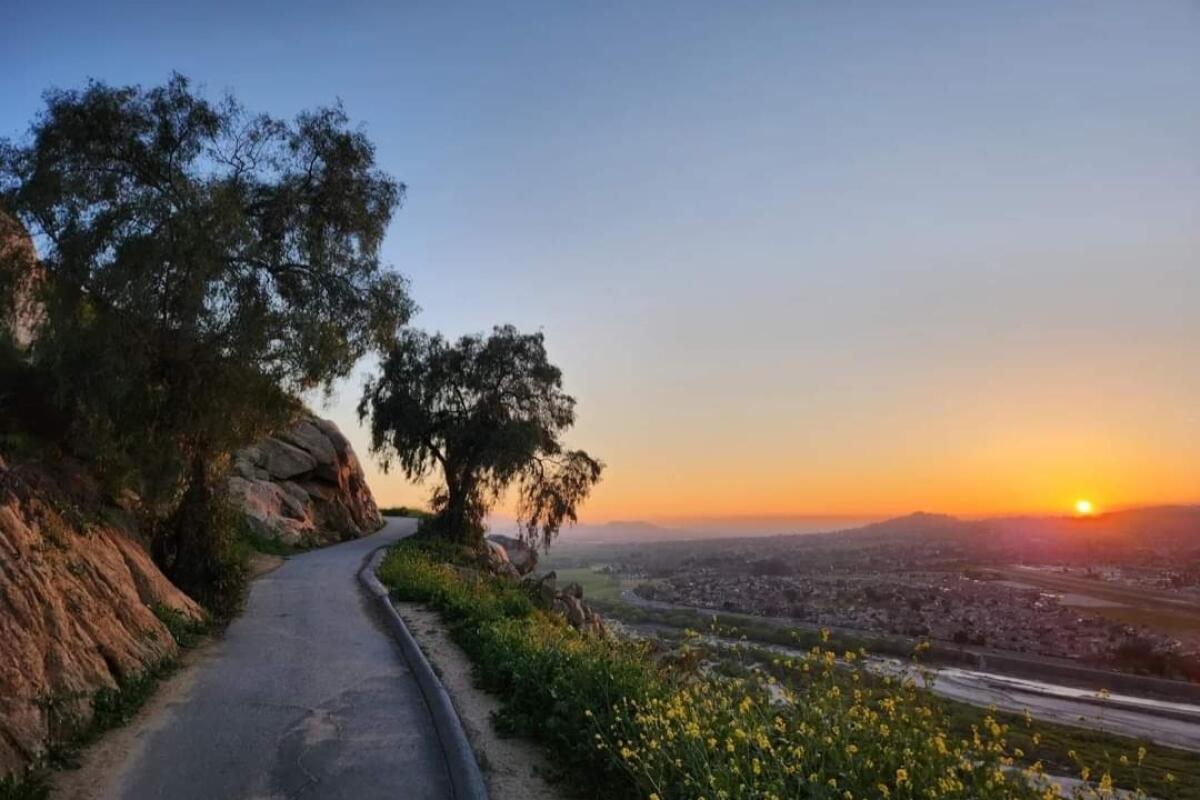
Behold the views at the top of Mt. Rubidoux Trail
Sign up for This Evening's Big Stories
Catch up on the day with the 7 biggest L.A. Times stories in your inbox every weekday evening.
You may occasionally receive promotional content from the Los Angeles Times.
